Hwarang Institute (화랑교육원)
2.4 Km 19629 2024-02-23
62 Saenamsan-gil, Gyeongju-si, Gyeongsangbuk-do
Hwarang Institute is Korea's first character education organization. It aims to inherit the spirit of the Silla dynasty's Hwarang, a youth warrior group, and to cultivate good character and personality in children. Its facilities include Hwarang Hall, a playground, an auditorium, and a Safety Education Hall. Notably, the Safety Education Hall features an earthquake experience room, a life-saving room, and a 4D video room, where children can receive effective preventive safety education on health, crime, and natural disasters. Nearby tourist attractions include the Gyeongju National Museum, the Tomb of King Jeonggang, Gyeongju Millennium Forest Garden, and the Tomb of King Gyeongae.
Silla Sori Festival - Emille (신라소리축제 에밀레전)
2.5 Km 5047 2021-01-08
274, Gyo-dong, Gyeongju-si, Gyeongsangbuk-do
• 1330 Travel Hotline: +82-2-1330 (Korean, English, Japanese, Chinese) • For more info: +82-53-427-5114
Silla Sori Festival mainly focuses on the King Seongdeok Divine Bell (Emille Bell), established during the Unified Silla period, and takes place in Gyeongju, embracing its thousand-year-old heritage. The festival has been held to acknowledge the value and legacy of this traditional Korean bell dating back to the Silla period.
Woljeonggyo Bridge (월정교)
2.5 Km 2725 2023-01-03
31, Gyochonan-gil, Gyeongju-si, Gyeongsangbuk-do
+82-54-779-6100
Woljeonggyo Bridge located in Gyo-dong, Gyeongju was built during the Unified Silla period (AD 676-935), but was burnt down during the Joseon dynasty. Through historical research, the bridge was rebuilt in April 2018 to become the largest wooden bridge in Korea. According to Samguk Sagi (History of the Three Kingdoms), the bridge was built during the 19th year of King Gyeongdeok’s reign (AD 760), connecting Wolseong and Namsan together. The historical research to rebuild the bridge lasted from November 26, 1984 to September 8, 1986, finding that the bridge was made with wood for the first time. The first rebuilding of the bridge was from 2008 to 2013 and the finishing touches were added from April 2016 to April 2018. Through this research and rebuilding process, future restoration of historical buildings have a better reference to use.
Silla Cultural Festival (신라문화제)
2.5 Km 7295 2023-09-14
Gyo-dong, Gyeongju-si, Gyeongsangbuk-do
+82-54-777-5953~4
Silla Cultural Festival is held to promote the excellence of Silla history and culture and to give pride to Gyeongju residents. The festival features a combination of traditional and modern aspects.
Sinseonam Hermitage Rock-carved Bodhisattva in Namsan Mountain of Gyeongju (경주 남산 신선암 마애보살반가상)
2.5 Km 27996 2020-04-04
Namsan-dong, Gyeongju-si, Gyeongsangbuk-do
+82-54-779-6100
This 1.4 m-high rock-carved Bodhisattva was carved on the southern rock standing right above Chilburam Rock on Namsan Mountain, which may be regarded as a repository of relics and artifacts including Buddha statues spanning the Three Kingdoms Period to the late Unified Silla Period.
Judging from the three-sided bejeweled crown he’s wearing on his head, this is clearly a Bodhisattva statue. He looks as if he is sitting on a cloud, while the closed eyes on the plump face give the impression that he is lost in deep thought. He seems to be watching mankind from his world above the clouds. He is holding a flower in his right hand and his left hand is held up to his chest as if he is preaching.
His robe is very thin, revealing the curves of the body, and hangs down to the base of the pedestal. The mandorla (Buddhist halo of light), which consists of both the dugwang (light radiating from the head) and hte singwang (light emanating from the Buddha’s body), is also the shrine for the statue, so the image of the Bodhisattva looks more prominent. It is presumed that this rock-carved Bodhisattva was made during the late eighth century during the Unified Silla dynasty.
Gyeongju Gyochon Traditional Village (경주 교촌마을)
2.5 Km 48056 2020-11-20
39-2, Gyochon-gil, Gyeongju-si, Gyeongsangbuk-do
+82-54-760-7880
At Gyeongju Gyochon Village, visitors can see the House of the Gyeongju Choi Clan (Important Folklore Material No. 27) and try some Gyeongju Gyodong Beopju Liquor (Important Intangible Cultural Asset No. 86-3). The village centers around the Gyeongju Choi Clan, a family known to have maintained their wealth for over 12 generations, producing many important people. Visitors can learn about the lifestyle and spending habits that enabled the family to do this. The village is also home to the site of Yoseokgung, the house of Silla Princess Yoseok. Nearby attractions include Gyerim Forest, Naemulwangneung Royal Tomb, and Gyeongjuhyanggyo Local Confucian School.
Yosokkoong (요석궁)
2.6 Km 53073 2020-07-14
19-4, Gyochonan-gil, Gyeongju-si, Gyeongsangbuk-do
+82-54-772-3347
Named after Silla King Muyeol's daughter, Princess Yoseok, Yosokkoong serves traditional Korean food. The resturant is run by the Choi family, who settled on the site of Princess Yoseok's house during the Joseon dynasty, and has passed on the restaurant and family recipes through 12 generations. All the foods served are made with organic ingredients, for a healthy taste that cannot be found anywhere else.
Gyeongju National Museum (국립경주박물관)
2.8 Km 73605 2023-07-12
186, Iljeong-ro, Gyeongju-si, Gyeongsangbuk-do
+82-54-740-7500
Gyeongju National Museum houses numerous historical and cultural artifacts of the Silla dynasty (57 BC-AD 935). The museum provides various programs including at the Children’s Museum School. The newly renovated Silla Art Gallery and Silla History Gallery lobby by Teoyang Studio are popular among visitors. This multi-complex center provides the history of Silla with various artifacts.
The Divine Bell of King Seongdeok (성덕대왕신종)
2.8 Km 25673 2020-04-04
186, Iljeong-ro, Gyeongju-si, Gyeongsangbuk-do
+82-54-740-7500
The Divine Bell of King Seongdeok, the largest Korean bell preserved, stands 3.75-meter tall, has a lip diameter of 2.27 meters, and is 11 to 25 entimeters wide. In 1997, Gyeongju National Museum weighed it at 18.9 tons. The bell was cast to pay tribute to the memory of King Seongdeok. It was completed in 771 and named ‘The Divine Bell of King Seongdeok.’ However, because the bell was installed at Bongdeoksa Temple, it has also been called the Bell of Bongdeoksa.
The bell is also known as the Emile Bell, a name derived from an ancient legend in which a child was sacrificed in order to give sound to the bell, whose echoes of ‘em-ee-leh’ resemble the traditional Korean word for "mommy."
The tubular sound pipe at the top of the bell that helps the sound reverberate is a unique feature that can be found only in Korean bells. The yongnyu, which serves as a loop to hang the bell, has been decorated to resemble a dragon’s head. A band of arabesque patterns can be found at the shoulder, and the striking point of the bell is in the shape of a lotus flower.
The magnificent design and inscription methods used in this bell exemplify the artisan's craftmanship of the Unified Silla period. The bell is also inscribed with over one thousand Chinese characters, and its beauty and integrity have been meticulously preserved despite the passage of over 1,300 years.
Gyeongju Royal Tomb of King Naemul (경주 내물왕릉)
2.8 Km 13450 2020-04-04
Gyo-dong, Gyeongju-si, Gyeongsangbuk-do
+82-54-779-6100
King Naemul was the 17th monarch of the Silla Kingdom (in power from 356 to 402) and became the second king of the Kim family name. King Naemul was known as the first king to initiate the king title of ‘Maripgan’ and was known for spreading cultural advancements from China to the Korean people. When the allied forces of Baekje and Japan attacked, he asked Gwanggaeto the Great of Goguryeo for help and led the people to victory, contributing to the increased strength of the Silla Kingdom. After his rule, the throne was exclusively ceded to members of the Kim family clan.
The royal tomb of King Naemul is a large mound (22 m in diameter and 5.3 m in x_height) that sits on the northern hill of the Confucian school of Gyeongju. The edge of a natural stone is exposed around the bottom of the mound, pointing to the fact that the inner chamber tomb was made of stone. In the historical document Samguk Sagi (History of the Three Kingdoms), no records are found about the tomb, but the Samguk Yusa (Memorabilia of the Three Kingdoms) describes the king’s tomb as being located in the southwest of Cheomseongdae, which is consistent with the tomb’s location.
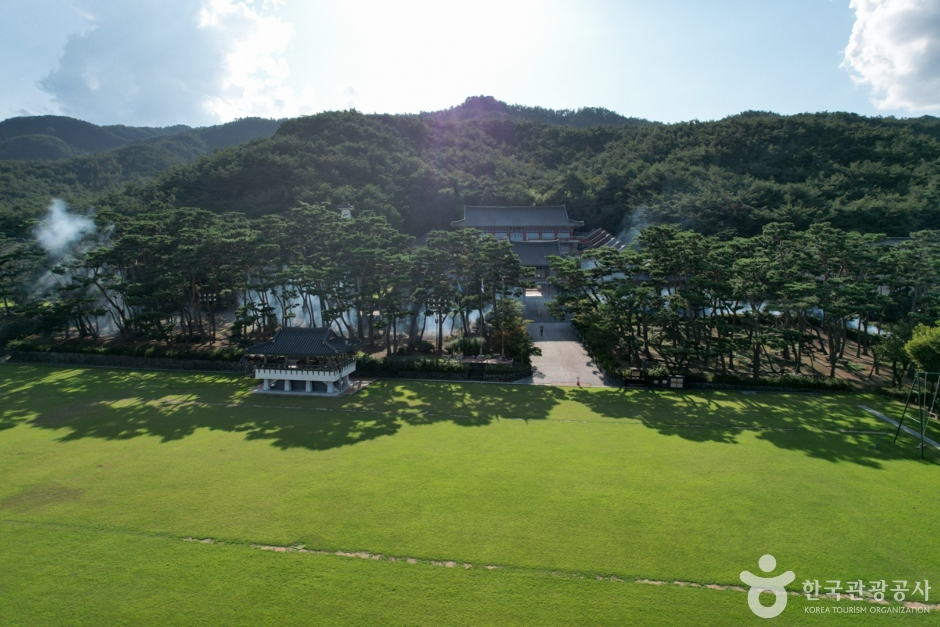
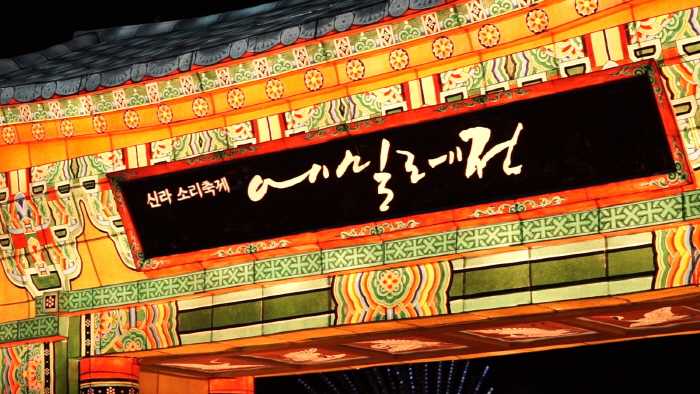

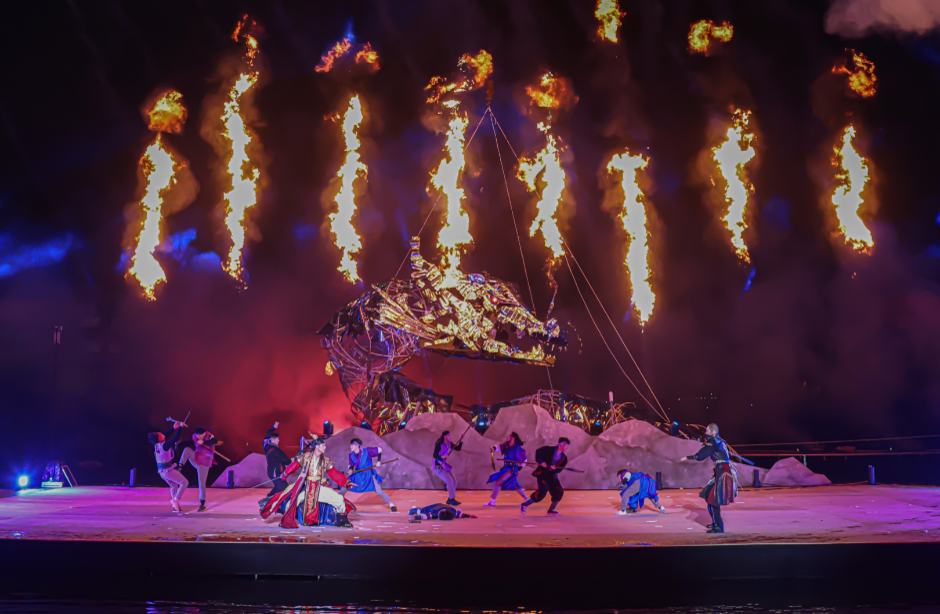
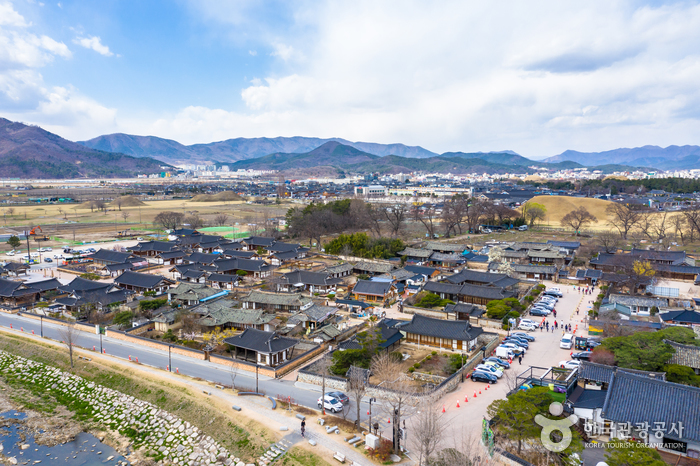
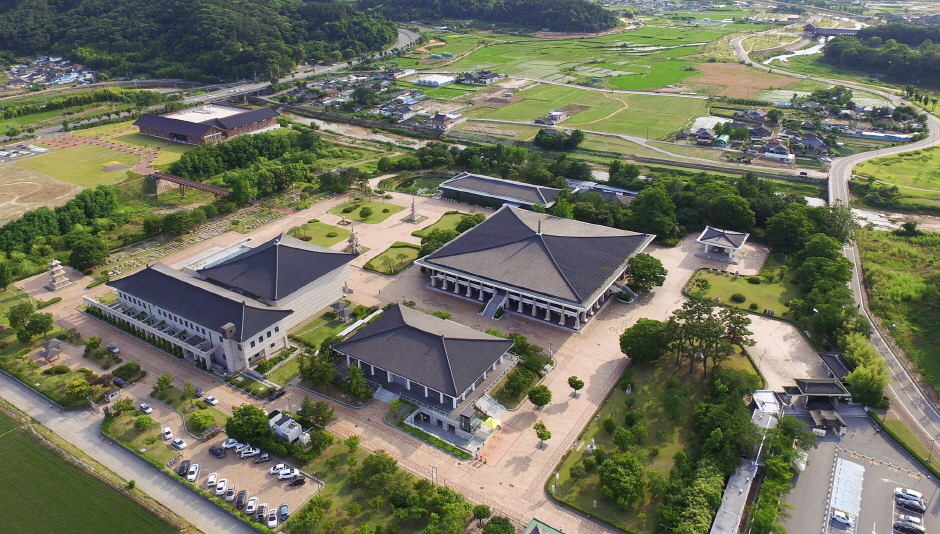
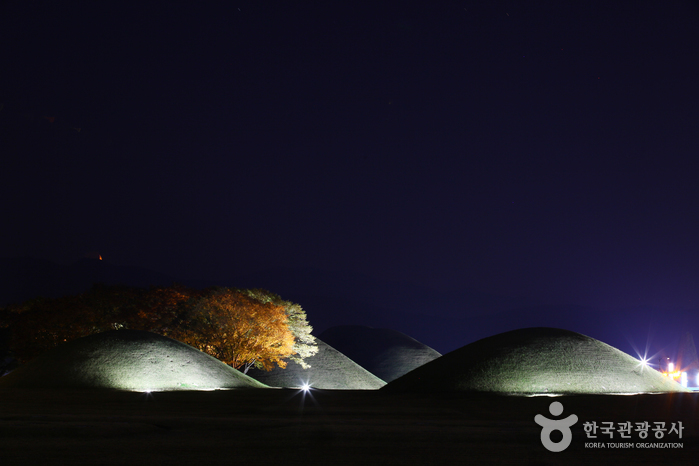
 English
English
 한국어
한국어 日本語
日本語 中文(简体)
中文(简体) Deutsch
Deutsch Français
Français Español
Español Русский
Русский